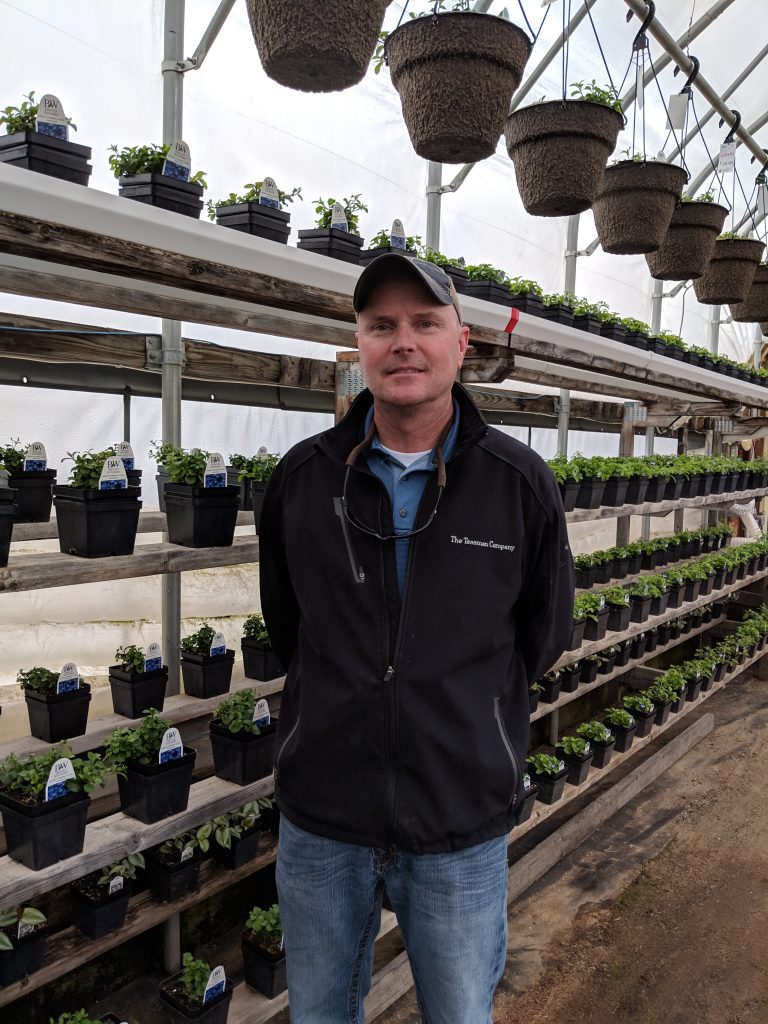Staying Ahead of Chlorotic Petunias and Calibrachoas

By Steve Jones
pH too high? Today, I’ll talk about why it’s not a good thing and what you can do to solve this issue.
Petunia and calibrachoa require a root zone pH of 5.5 to 5.8. If the root zone pH of these varieties becomes too high, say above 6.2, iron becomes unavailable to the plant resulting in yellowing of plant tissue between the leaf veins. This is called interveinal chlorosis. It’s a very common occurrence in almost every greenhouse in the Midwest.
Root zone pH is typically driven up by a couple of factors. The most common is high alkalinity in irrigation water. Irrigation water should have an alkalinity of 80-120ppm. Unfortunately, here in the Midwest most well water has an alkalinity of 200ppm and higher. It’s like adding liquid lime to you your soil with each irrigation. If you use city, RO or rural water with low alkalinity and you still have chlorotic leaves, it may be a good idea to take a look at your fertilizer selection. Using a fertilizer that is potentially basic will have the same effect (an increase in root zone pH) as watering with high alkalinity water.
Setting up a weekly in-house soil testing is the only way to stay ahead of this condition. Make sure to pick a soil testing method and interval after irrigation and stick with it. It will give you consistent results which will allow you to see how your pH is trending.
If root zone pH is trending up, there are a couple of ways to drive it back down. If you inject acid, you may need to increase the amount to neutralize more of the alkalinity. Or for those that don’t inject acid, you can use a dose of 21-7-7 fertilizer at 200ppm N with an addition of Sprint 330 at 2 ounces per 100 gallons. (Some will recommend Sprint 138, but I stay away from this because of the potential to burn leaves if it isn’t washed off.) Be sure to avoid applying this fertilizer/iron mix to plants that like a higher media pH like geranium and marigold.
As with any cultural practice, it is better to proactive instead of reactive to pH drifting upwards.
Good luck. For more info on soil testing and correcting chlorosis, give us a call.
Steve joined Tessman in 2016. Along with a BS in Horticulture and a BS Business Economics from South Dakota State University, Steve has over 20 years experience in greenhouse production, sales and consulting. He has worked in small mom and pop greenhouses all the way up to 50 plus acre wholesale greenhouses. He prides himself on finding new ways to improve production practices.
